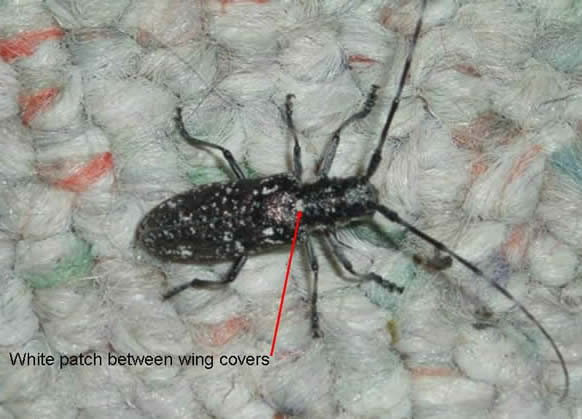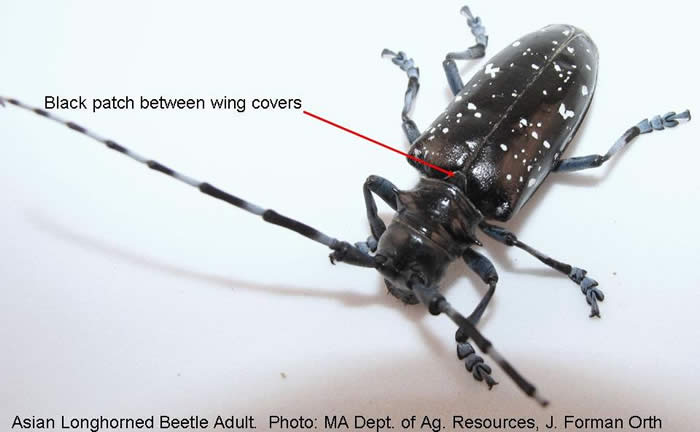DACF Home → Bureaus & Programs → Maine Forest Service → Forest Health & Monitoring → Forest Pest Index → Whitespotted Sawyer (Monochamus scutellatus) Adult
WHITESPOTTED SAWYER ADULT
Monochamus scutellatus
Photo: Angela Wheeler

The whitespotted sawyer is a common native woodboring insect and an important pest of sawn logs. However, it is not a significant threat to forest health because it tends to attack weakened, dead and dying wood. Its primary host in the northeast is eastern white pine, but it will infest a wide range of coniferous hosts.

The whitespotted sawyer is often confused with the similar-looking Asian longhorned beetle, a very destructive exotic forest pest. Several characteristics help to distinguish the whitespotted sawyer from Asian longhorned beetle. One of the easiest to recognize is the white patch between the wing covers of the sawyer (red arrow). This area is black in Asian longhorned beetle and white in all whitespotted sawyers. In addition:
- The whitespotted sawyer is a bronzy black, while the Asian longhorned beetle is true black and shiny.
- The spots on Asian longhorned beetle wings are more-defined, the wss is more speckled.
- The texture of the wing covers is smooth towards the tail-end of the wings on the Asian longhorned beetle, the whitespotted sawyer wings are uniformly rough.
- See more at www.maine.gov/alb and if in doubt, report your find (Note, the beetle itself or photos of the beetle will be required to make a determination)!